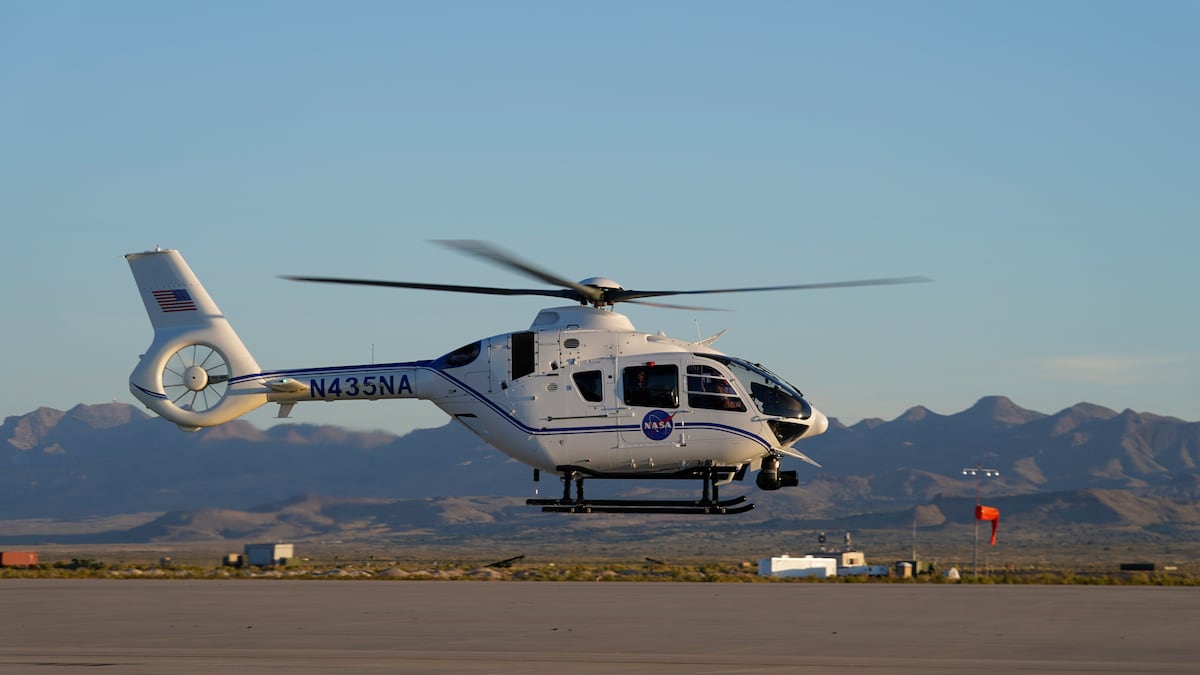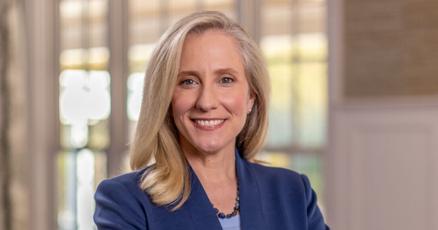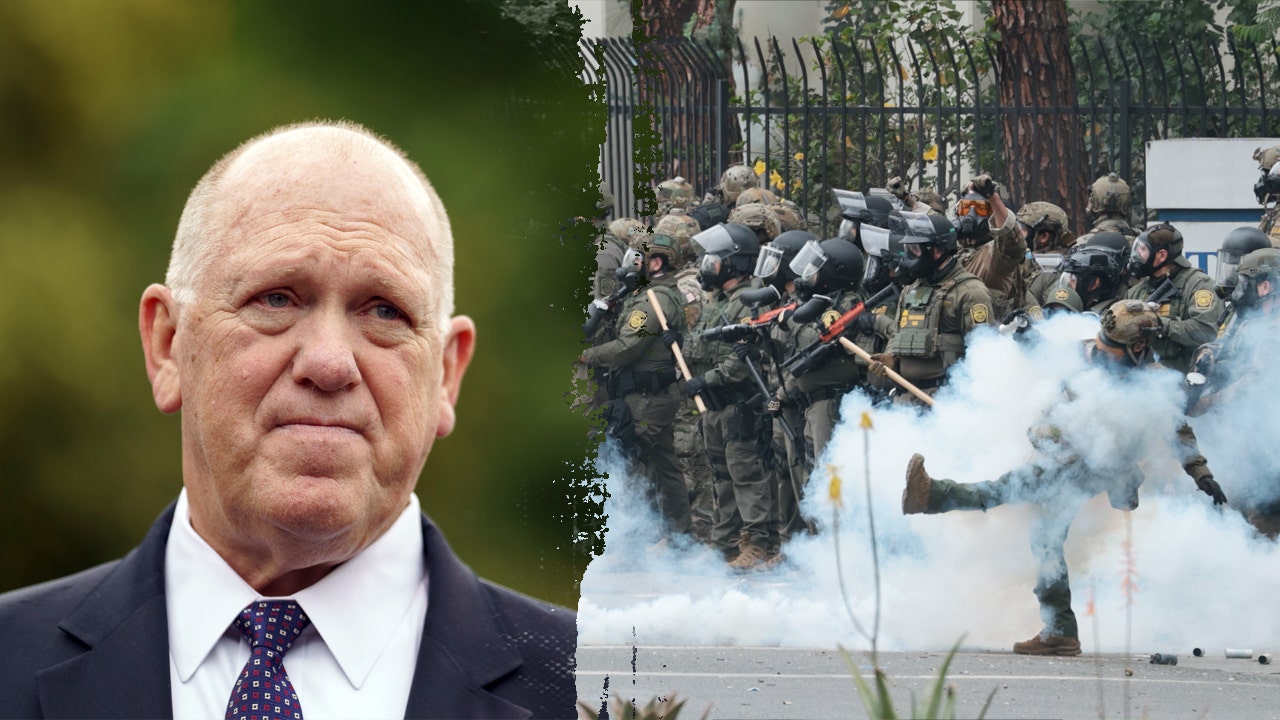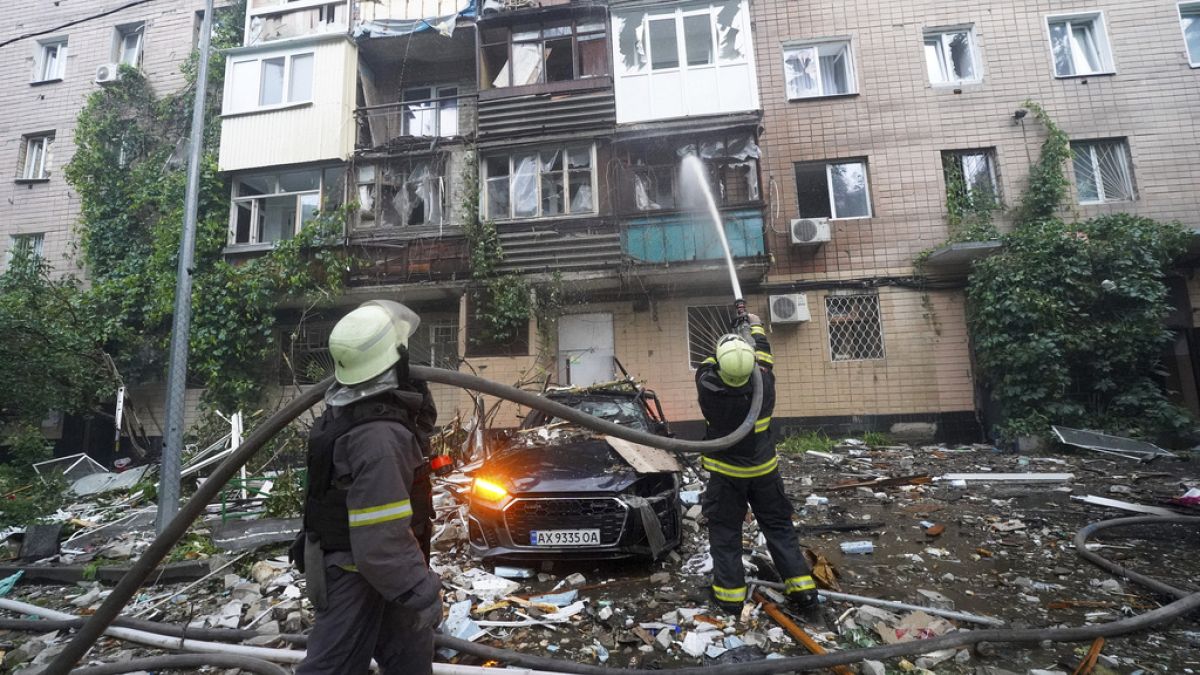Hawaii
Hawaii is America's Worst State for Business in 2024, with off-the-charts costs and climate risks rising

An aerial image taken Aug. 10, 2023, shows destroyed homes and buildings burned to the ground in Lahaina in the aftermath of wildfires in western Maui, Hawaii.
Patrick T. Fallon | Afp | Getty Images
First came the Covid-19 pandemic, striking at the very heart of Hawaii’s economy.
Then, just as the state was beginning to recover, came last summer’s deadly Maui wildfires, which killed more than 100 people, destroyed upward of 2,000 structures, did $5.5 billion in damage and paralyzed the state’s tourism industry yet again.
Finishing last in CNBC’s 2024 competitiveness ranking, America’s Top States for Business, seems pretty minor in comparison to all of that. But Hawaii’s economic issues go even deeper than the high-profile tragedies that have befallen the state.
Consider the Honoapiilani Highway.
Hawaii Route 30 hugs the western shore of Maui. Well before the fires, state transportation officials warned in a 2021 report about climate risks that the highway was at risk from rockfalls, landslides, flooding from high waves, storm surges, coastal erosion and even tsunamis. Already, portions of the road frequently close due to flooding.
“Given our understanding of what is changing, we need to make some tough decisions to ensure the long-term viability of the State,” the report said.
A sign is posted warning of earthquake damage to the road from seismic activity at the Kilauea volcano on Hawaii’s Big Island, in Hawaii Volcanoes National Park on May 17, 2018.
Mario Tama | Getty Images
Hawaii was never going to do well in a competitive ranking that emphasizes infrastructure, as this year’s does. The state is remote — 2,400 miles from the mainland — and as an island chain, basic infrastructure features that are important elsewhere, such as freight rail, are irrelevant. But now, even the infrastructure the state does have is under threat, such as the Honoapiilani Highway.
“That’s the only link to the rest of the island from the area where the wildfires were,” said U.S. Secretary of Transportation Pete Buttigieg, who visited Hawaii in February.
The state is set to receive $2.8 billion under the Bipartisan Infrastructure Law, and nearly half of it will go toward rebuilding bridges and roads. Some $160 million of that will go toward relocating portions of the Honoapiilani Highway.
“We’re funding them to raise that highway to higher ground,” Buttigieg told CNBC. “We’re not going to make somebody build a road the exact same way if it’s getting washed out year after year by what used to be a once-in-100-years event.”
In an aerial view, cars back up for miles on the Honoapiilani Highway as residents are allowed back into areas affected by the wildfire, in Wailuku, Hawaii, on Aug. 11, 2023.
Justin Sullivan | Getty Images
It will be at least 2027 before the improvements are complete, transportation planners say. Add the many other roads and bridges needing help, and it begins to explain why Hawaii’s infrastructure ranks No. 47 in this year’s Top States study.
The high cost of paradise
Hawaii is also America’s most expensive state to do business in, with the third-highest cost of living. Residents and businesses pay the nation’s highest utility costs, and corporate and individual taxes are high.
With so many inherent disadvantages, why doesn’t Hawaii finish at the bottom of the rankings every year? The answer, in part, is because it’s Hawaii, with a legendary quality of life. But now, even that is under siege.
Hawaii ranks No. 7 for Quality of Life in 2024, its lowest ranking in the important category since our Top States study began in 2007.
It is not that Hawaii isn’t still a paradise. But even in a paradise, working families need child care.
While licensed child-care facilities are readily available in Hawaii, they are prohibitively expensive. According to Child Care Aware of America, child care in Hawaii costs 18% of the median income for a married couple. That is the most expensive in the country, and nearly twice the national average.
Multiple studies have linked quality child care and preschool to economic competitiveness.
In 2022, the Hawaii legislature approved $200 million in spending for new prekindergarten classrooms, part of a broader goal championed by Lt. Gov. Sylvia Luke to offer universal pre-K for three- and four-year-olds in the state by 2032.
A family walks on the beach together during sunset in Kauai, Hawaii.
Fly View Productions | E+ | Getty Images
“Access to preschool is a social justice issue for Hawaii,” Luke said in a statement at the time. “Children who have attended high-quality preschool or child-care programs are much better prepared for success in kindergarten, but not every family has access to early learning programs.”
The plan was to build 80 new classrooms by this August, with ambitious annual goals after that. But according to a website for the program run by Luke’s office, the program is already falling short of its goals. Two years after the bill was passed, only about half the money has been spent. Just 13 classrooms have been built, with another 50 under construction. The physical facilities are just part of the battle. Hawaii also faces a serious shortage of child-care workers.
An economy struggling to rebound
Put it all together, and it leads to America’s second-worst economy, according to the Top States study, after Mississippi. It is little surprise that no major companies are headquartered there. Economic growth was modest last year as the state struggled to recover from the wildfires, and job growth was meager at best.
In their most recent quarterly economic outlook, published in June, forecasters with the state’s Department of Business, Economic Development and Tourism predicted that tourism will end the year flat following a 4% drop in the first four months of the year, largely due to the wildfires.
They do expect visitor traffic to bounce back next year, and to continue growing — albeit at more modest levels — through 2026.
But in America’s Bottom State for Business, they have learned the hard way that Mother Nature can have other ideas.

Hawaii
Is This What Passes for a Hawaii Flight Now?
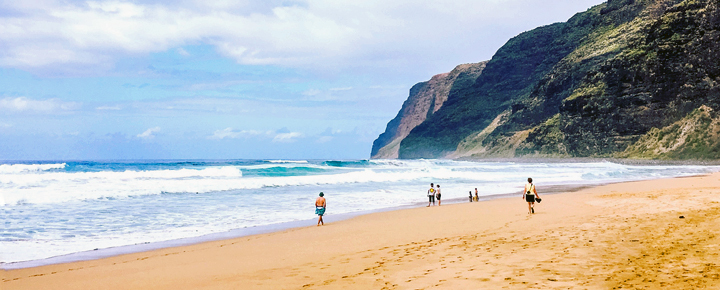
Has something shifted on flights to Hawaii—and not in a good way? We just flew five and a half hours across the Pacific, and we got one poured beverage, no refills, and no meal purchase option.
We were in economy—if you think that was bad, wait to hear what happened in first class.
There are no trays, promised improved snacks, or new drink options—just the bare minimum on a route United once treated like something special—a route BOH editors have been flying for over 30 years.
One beverage, poured only, and a 3/4 ounce snack.
Service began early and ended fast. Economy passengers received a single poured beverage in a plastic cup. Flight attendants made clear there would be no second beverage service and no full cans offered. If you wanted more, water would be available—and it was offered once. It didn’t even feel like a Hawaii flight. It felt like an afterthought.
Pretzels, quinoa crisp, or stroopwafel followed. With little for the flight attendants to do, they became obsessed with the State of Hawaii Agriculture forms. They tried to collect ours early in the flight, and when it wasn’t ready, we were told we might be arrested if it wasn’t completed before landing. This was a first.
We’ve come to expect minimal service in economy, which is fine. However, this United Airlines flight from San Francisco to Kauai was different. After all, it was marketed and priced as a premium leisure route. Five plus hours in the air with one tiny drink and a small snack only questionably meets reasonable standards.
This might be why the pilot came out to extensively greet everyone before departure, trying to put everyone in a good mood before the flight, and the issues not of their making were revealed.
First class, minus the class.
Up front, things weren’t much better. Maybe they were worse. We were seated in the first row behind first class, where it was very clear: no meals were offered, and no alcohol was served. Instead, passengers received an apologetic explanation, one poured beverage, and a mileage credit as compensation.
It was a striking downgrade for a premium cabin on a long-haul Hawaii flight. There was no sense that this was a one-time issue; It felt routine. And if this is what first class looks like during peak summer travel, it raises the question: What exactly are travelers paying for?
The real issue: a meltdown at SFO.
The flight attendants didn’t sugarcoat it—and neither will we. United’s catering operation out of San Francisco is still a mess. Things haven’t stabilized after switching from Gate Gourmet to LSG Sky Chefs, which leaves flights in disarray. Many flights are going with minimal or missing onboard service, with service items sometimes stuffed into trash bags and boarded, and nobody at United seems surprised anymore.
Before departure, United sent a text admitting the problem: “Due to a catering transition, some of our outbound flights from San Francisco may not have our typical onboard selection.” Translation: Don’t expect much at all. According to the crew, the situation won’t improve until sometime after July.
What triggered this? United replaced longtime SFO caterer, Gate Gourmet, with LSG Sky Chefs. That shift came with a fallout: hundreds of Gate Gourmet employees were reportedly laid off, and LSG rehired many of the same people under different terms. It’s unclear what that means for quality, continuity, or morale, but passengers pay the price for how United handled the transition.
What triggered problems at United?
How could a company the size of United allow this to unfold, at its largest hub west of Denver and on key longer-haul domestic routes to Hawaii, among others? It’s a mystery even the crew couldn’t explain. We were told that some crew members have refused to work routes from San Francisco until this is resolved, and given the circumstances, we can see why.
It is abundantly clear that the transition was poorly timed and badly communicated, and paying passengers have been feeling it for a long time.
Travelers across routes have reported dry flights with no food, downgraded premium meals, and mystery substitutions. On this Hawaii flight, there was technically food. But that’s about as generous as we can be.
Navigating SFO was its own ordeal.
San Francisco International is also in the middle of a major construction project. Rob received a text from United warning: “San Francisco Airport (SFO) is currently undergoing renovations, which may require additional time to reach your gate.”
It meant the usual main entrance was closed, forcing a circuitous detour up and down and through the garage parking lot after getting off the AirTrain. Signage was limited, help was hard to find, and the layout felt more improvised than planned. Staff did their best, but the entire setup frustrated many travelers before the flight began.
This isn’t about any perks. It’s about the basics.
Most travelers flying to Hawaii from the mainland know they’re no longer getting free checked bags or a hot meal. But what’s happening now on United SFO routes is different. When five-plus-hour flights can’t offer passengers two beverages, that’s not even economy service. That’s a failure of planning.
Some others on social media said that United had warned them there would be no catering and that they should bring their food before boarding. Some reported a $15 credit from United, which at SFO wouldn’t go far for any meal.
It’s not the crew’s fault. They were efficient and apologetic. But they’re working within severe operational limits given to them. One good thing is that United flight attendants recently secured a tentative contract that includes raises of up to 45% over five years. It doesn’t fix the catering mess, but at least their patience in the cabin might finally pay off.
We’ll be watching this all summer.
Bring your food if you’re flying from San Francisco to Hawaii this season. That includes water. Don’t count on anything onboard. And don’t assume your United Hawaii flight will feel like anything special.
The only thing that stood out on this flight was high-quality Wi-Fi across the Pacific for $8, which we shared between the two of us with a Mobile Hotspot. The Viasat Wi-Fi on the route previously didn’t work most of the time. This article was written at 30k feet.
Have you flown on any routes from United San Francisco to Hawaii recently? Was your experience the same, or better? Let us know what you saw, and we’ll keep tracking what’s going on aboard Hawaii flights from the mainland.
Get Breaking Hawaii Travel News
Hawaii
Rainbow Wahine soccer releases 2025 schedule
HONOLULU (HawaiiNewsNow) – The University of Hawaii women’s soccer team released it’s 2025 schedule on Friday.
The ‘Bows hoping to defend their Big West regular season title in their final season in the Conference.
UH will open the season on the road on August 14th with a nonconference match against Long Beach State before taking on Pepperdine three days later.
Hawaii will then host 10 matches in a row with two Outrigger Tournaments.
The Outrigger Soccer Kickoff will feature Central Arkansas and Oregon while the Outrigger No Ka Oi will have Northern Arizona and 2024 NCAA Tournament team California Baptist.
Hawaii will also have nonconference games against Sacramento State, Saint Mary’s and Eastern Washington before opening conference play on September 18th at Long Beach State.
All home matches will be played at the Waipio Peninsula Soccer Stadium with free admission.
Copyright 2025 Hawaii News Now. All rights reserved.
Hawaii
UH athletics director pick has strong ties to Hawaii, but will still face challenges

HONOLULU (HawaiiNewsNow) – University of Hawaii president Wendy Hensel announced her pick for the university’s next athletics director, appointing Matt Elliott on Thursday.
Community leaders praise Elliott for his short time he’s spent in the islands.
Elliott most recently moved to Oahu in 2022 and started working for the Hawaii Community Foundation, where their now-former CEO says UH is making the right move.
As CEO, Micah Kane worked closely with Elliott, who served as the nonprofit’s senior policy director.
“In my career, I would say he’s one of the top leaders that I’ve ever had the opportunity to work with,” Kane told reporters. “I think what you’re going to find when he goes into the the system is that he’s going to map out a strategy and he’s going to be very collaborative on how that strategy is built.”
Longtime banker Jack Tsui also likes the pick.
The search committee co-chair says his team looked at more than 100 candidates and came up with four finalists based largely on their Division I experience, recruiting skills, and Hawaii ties.
Elliott’s wife, a Punahou graduate, was born and raised in Hawaii. They’ve lived off and on in Hawaii since in 2005, but Elliott also spent 13 years at UCLA.
“He worked successfully with coaches and guided UCLA’s entrance into the Big Ten,” Tsui said. “I think his personal attributes would be integrity, intelligence, honesty.”
Elliott said in a statement that he’s grateful for the opportunity and plans to “chart an ambitious and unified path forward.”
Former UH regent Jeff Portnoy says Elliott will need to adapt to a changing college landscape.
“I know that Mr. Elliott has been involved in college sports while he was at UCLA, apparently had a lot to do with their moving to the Big Ten, but so much has happened in collegiate sports in the last 24 months that he’s got a big learning curve ahead of him,” Portnoy said.
Pending approval by the UH regents, Elliott’s base salary will start at $425,000 with additional performance-based incentives.
That’s a change from former AD Craig Angelos, who was never on contract.
Tsui saying it was important that the next AD would be under contract.
“It was the first conversation I had with the president and that was in January,” Tsui said.
“I haven’t seen the contract. Unfortunately, when I was a regent, I saw way too many athletic contracts and know how problems can arise,” Portnoy said.
Elliott’s most obvious tests include the Aloha Stadium project and name image and likeness compensation for athletes, as well as transitioning more teams to the Mountain West Conference next year.
A more nuanced test will be navigating the political and business communities in a state that loves UH sports.
“He could be the right choice,” Portnoy said. “Again, I don’t know him. I just know these other things. He’s got some strong positives, but he’s got some huge challenges.”
Elliott would need to be approved by the UH Board of Regents at a special meeting set for June 16.
Copyright 2025 Hawaii News Now. All rights reserved.
-

 News1 week ago
News1 week agoVideo: Faizan Zaki Wins Spelling Bee
-

 News1 week ago
News1 week agoVideo: Harvard Commencement Speaker Congratulates and Thanks Graduates
-

 Politics1 week ago
Politics1 week agoMichelle Obama facing backlash over claim about women's reproductive health
-

 Technology1 week ago
Technology1 week agoAI could consume more power than Bitcoin by the end of 2025
-

 News1 week ago
News1 week agoPresident Trump pardons rapper NBA YoungBoy in flurry of clemency actions
-

 Technology1 week ago
Technology1 week agoSEC drops Binance lawsuit in yet another gift to crypto
-

 Technology1 week ago
Technology1 week agoOpenAI wants ChatGPT to be a ‘super assistant’ for every part of your life
-

 World1 week ago
World1 week agoTwo killed in Russian attacks on Ukraine before possible talks in Turkiye


